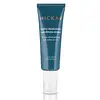What's inside
What's inside
 Key Ingredients
Key Ingredients

 Benefits
Benefits

 Concerns
Concerns

 Ingredients Side-by-side
Ingredients Side-by-side

Water
Skin ConditioningCaprylic/Capric Triglyceride
MaskingGlycerin
HumectantHydrogenated Lecithin
EmulsifyingCetyl Alcohol
EmollientSqualane
EmollientPalmitic Acid
EmollientAlpha-Glucan Oligosaccharide
CleansingAlteromonas Ferment Extract
Skin ConditioningSodium Hyaluronate
HumectantGlycine Soja Oil
EmollientBeta-Sitosterol
Emulsion StabilisingSqualene
EmollientCarbomer
Emulsion StabilisingXanthan Gum
EmulsifyingButylene Glycol
HumectantParfum
MaskingPhenoxyethanol
PreservativeEthylhexylglycerin
Skin ConditioningSodium Hydroxide
BufferingWater, Caprylic/Capric Triglyceride, Glycerin, Hydrogenated Lecithin, Cetyl Alcohol, Squalane, Palmitic Acid, Alpha-Glucan Oligosaccharide, Alteromonas Ferment Extract, Sodium Hyaluronate, Glycine Soja Oil, Beta-Sitosterol, Squalene, Carbomer, Xanthan Gum, Butylene Glycol, Parfum, Phenoxyethanol, Ethylhexylglycerin, Sodium Hydroxide
Hibiscus Sabdariffa Flower Extract
Skin ConditioningButylene Glycol
HumectantWater
Skin ConditioningGlycerin
HumectantCetyl Ethylhexanoate
EmollientCaprylic/Capric Triglyceride
Masking1,2-Hexanediol
Skin ConditioningCetyl Alcohol
EmollientGluconolactone
Skin ConditioningCapryloyl Salicylic Acid
ExfoliatingXanthan Gum
EmulsifyingHydrogenated Lecithin
EmulsifyingEthylhexyl Palmitate
EmollientHydroxyacetophenone
AntioxidantCarbomer
Emulsion StabilisingAmmonium Acryloyldimethyltaurate/Vp Copolymer
Potassium Hydroxide
BufferingGlyceryl Acrylate/Acrylic Acid Copolymer
HumectantDimethicone
EmollientCyanocobalamin
Skin ConditioningHibiscus Sabdariffa Flower Extract, Butylene Glycol, Water, Glycerin, Cetyl Ethylhexanoate, Caprylic/Capric Triglyceride, 1,2-Hexanediol, Cetyl Alcohol, Gluconolactone, Capryloyl Salicylic Acid, Xanthan Gum, Hydrogenated Lecithin, Ethylhexyl Palmitate, Hydroxyacetophenone, Carbomer, Ammonium Acryloyldimethyltaurate/Vp Copolymer, Potassium Hydroxide, Glyceryl Acrylate/Acrylic Acid Copolymer, Dimethicone, Cyanocobalamin
 Reviews
Reviews

Ingredients Explained
These ingredients are found in both products.
Ingredients higher up in an ingredient list are typically present in a larger amount.
Butylene Glycol (or BG) is used within cosmetic products for a few different reasons:
Overall, Butylene Glycol is a safe and well-rounded ingredient that works well with other ingredients.
Though this ingredient works well with most skin types, some people with sensitive skin may experience a reaction such as allergic rashes, closed comedones, or itchiness.
Learn more about Butylene GlycolThis ingredient is an emollient, solvent, and texture enhancer. It is considered a skin-softener by helping the skin prevent moisture loss.
It helps thicken a product's formula and makes it easier to spread by dissolving clumping compounds.
Caprylic Triglyceride is made by combining glycerin with coconut oil, forming a clear liquid.
While there is an assumption Caprylic Triglyceride can clog pores due to it being derived from coconut oil, there is no research supporting this.
Learn more about Caprylic/Capric TriglycerideCarbomer is a polymer of acrylic acid. Its main role is to create a gel consistency.
A high amount of carbomer can cause pilling or balling up of products. Don't worry, most products contain 1% or less of carbomer.
Cetyl Alcohol is a fatty alcohol. Fatty Alcohols are most often used as an emollient or to thicken a product.
Its main roles are:
Though it has "alcohol" in the name, it is not related to denatured alcohol or ethyl alcohol.
The FDA allows products labeled "alcohol-free" to have fatty alcohols.
Learn more about Cetyl AlcoholGlycerin is already naturally found in your skin. It helps moisturize and protect your skin.
A study from 2016 found glycerin to be more effective as a humectant than AHAs and hyaluronic acid.
As a humectant, it helps the skin stay hydrated by pulling moisture to your skin. The low molecular weight of glycerin allows it to pull moisture into the deeper layers of your skin.
Hydrated skin improves your skin barrier; Your skin barrier helps protect against irritants and bacteria.
Glycerin has also been found to have antimicrobial and antiviral properties. Due to these properties, glycerin is often used in wound and burn treatments.
In cosmetics, glycerin is usually derived from plants such as soybean or palm. However, it can also be sourced from animals, such as tallow or animal fat.
This ingredient is organic, colorless, odorless, and non-toxic.
Glycerin is the name for this ingredient in American English. British English uses Glycerol/Glycerine.
Learn more about GlycerinHydrogenated Lecithin is created from the hydrogenation of lecithin (a group of phospholipids). Hydrogenation is a chemical reaction between hydrogen and another element.
This ingredient is an emollient and emulsifier. As an emollient, it helps soften skin by trapping moisture within. As an emulsifier, it prevents oil and water ingredients from separating.
Water. It's the most common cosmetic ingredient of all. You'll usually see it at the top of ingredient lists, meaning that it makes up the largest part of the product.
So why is it so popular? Water most often acts as a solvent - this means that it helps dissolve other ingredients into the formulation.
You'll also recognize water as that liquid we all need to stay alive. If you see this, drink a glass of water. Stay hydrated!
Learn more about WaterXanthan gum is used as a stabilizer and thickener within cosmetic products. It helps give products a sticky, thick feeling - preventing them from being too runny.
On the technical side of things, xanthan gum is a polysaccharide - a combination consisting of multiple sugar molecules bonded together.
Xanthan gum is a pretty common and great ingredient. It is a natural, non-toxic, non-irritating ingredient that is also commonly used in food products.
Learn more about Xanthan Gum